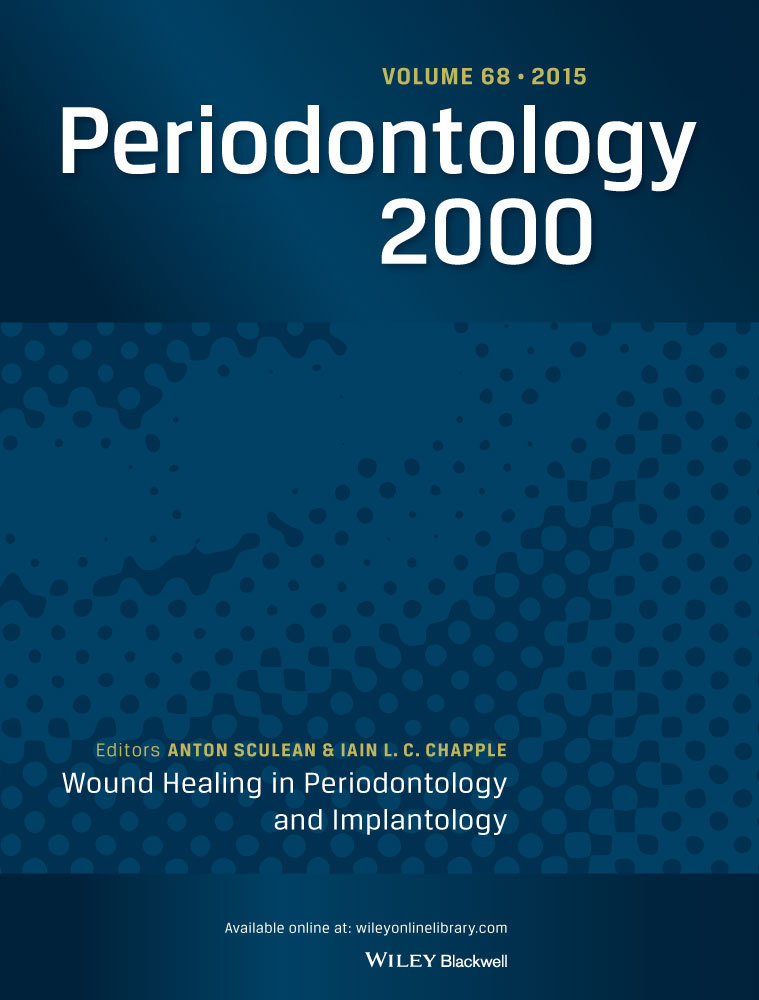Long-term stability of transcrestal sinus augmentation.
IF 15.7
1区 医学
Q1 DENTISTRY, ORAL SURGERY & MEDICINE
引用次数: 0
Abstract
Transcrestal sinus augmentation has emerged as a minimally invasive alternative to lateral window techniques for vertical bone augmentation in the edentulous maxilla. Since its early introduction and modification over the last several decades, this technique has demonstrated predictable outcomes for implant placement in regions with limited bone height. This narrative review examines the current understanding and evolution of transcrestal sinus floor elevation (TSFE), focusing on factors related to long-term stability. We evaluate the procedure's foundational principles, including osteotome-mediated bone condensation and controlled fracture of the sinus floor, which contribute to enhanced primary implant stability. The review addresses critical aspects of treatment planning, surgical execution, and postoperative management while examining potential complications and their resolution. Special attention is given to emerging technologies and materials that may influence treatment outcomes. By synthesizing current evidence and clinical experience, this review aims to provide clinicians with a comprehensive framework for optimizing TSFE procedures and managing potential complications, ultimately working toward a standardized approach through a proposed clinical checklist. Finally, we provide a standardized checklist for TSFE outcome reporting in research studies to facilitate more consistent, reproducible, and comprehensive documentation of surgical procedures, complications, and long-term stability.经瓣窦增强术的长期稳定性。
经瓣窦增强术作为一种微创替代侧窗技术用于无牙上颌骨垂直骨增强。在过去的几十年里,由于其早期的引入和改进,该技术已经证明了在骨高度有限的区域植入物的可预测结果。本文回顾了目前对经瓣窦底抬高(TSFE)的理解和发展,重点关注与长期稳定性相关的因素。我们评估了该手术的基本原则,包括骨组介导的骨凝聚和控制窦底骨折,这有助于增强初级种植体的稳定性。这篇综述讨论了治疗计划、手术执行和术后管理的关键方面,同时检查了潜在的并发症及其解决方案。特别关注可能影响治疗结果的新兴技术和材料。通过综合目前的证据和临床经验,本综述旨在为临床医生提供一个全面的框架来优化TSFE程序和管理潜在的并发症,最终通过拟议的临床清单制定标准化的方法。最后,我们为研究中的TSFE结果报告提供了一份标准化的清单,以促进手术过程、并发症和长期稳定性的更一致、可重复和全面的记录。
本文章由计算机程序翻译,如有差异,请以英文原文为准。
求助全文
约1分钟内获得全文
求助全文
来源期刊

Periodontology 2000
医学-牙科与口腔外科
CiteScore
34.10
自引率
2.20%
发文量
62
审稿时长
>12 weeks
期刊介绍:
Periodontology 2000 is a series of monographs designed for periodontists and general practitioners interested in periodontics. The editorial board selects significant topics and distinguished scientists and clinicians for each monograph. Serving as a valuable supplement to existing periodontal journals, three monographs are published annually, contributing specialized insights to the field.
 求助内容:
求助内容: 应助结果提醒方式:
应助结果提醒方式:


